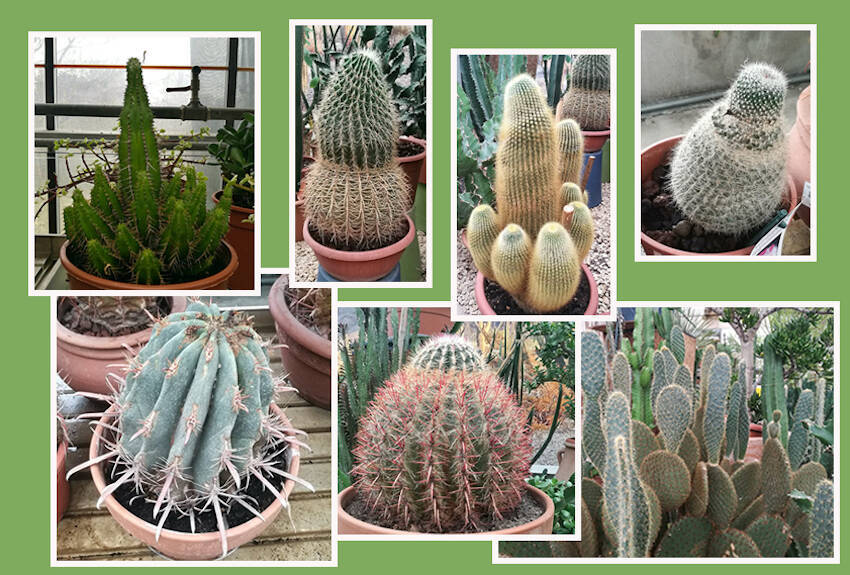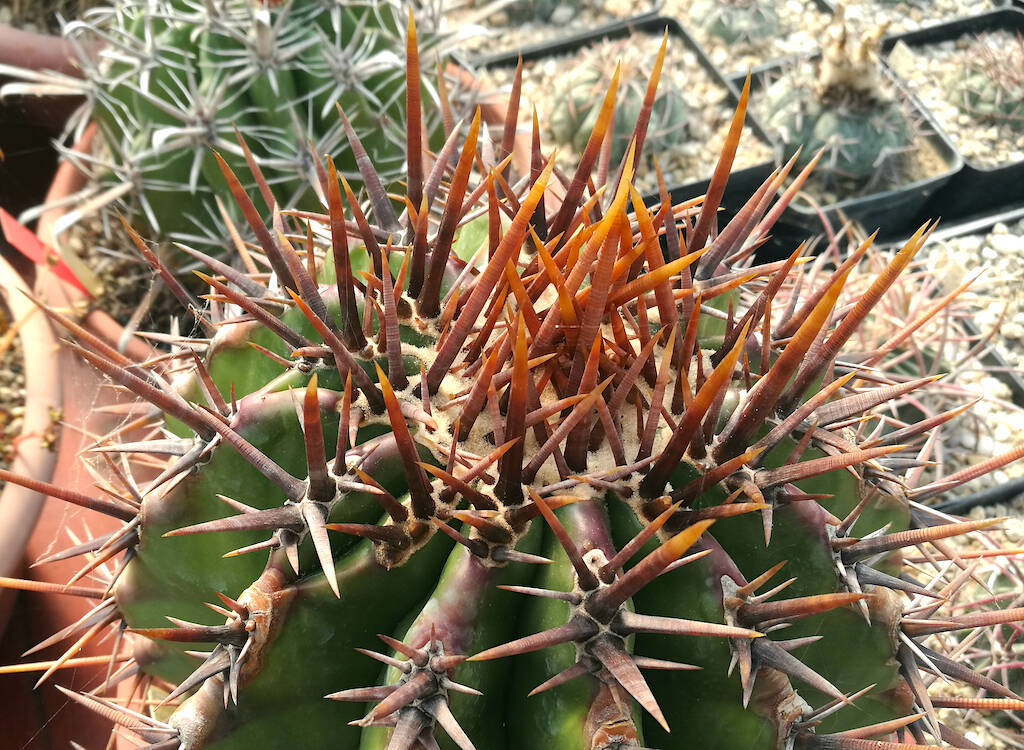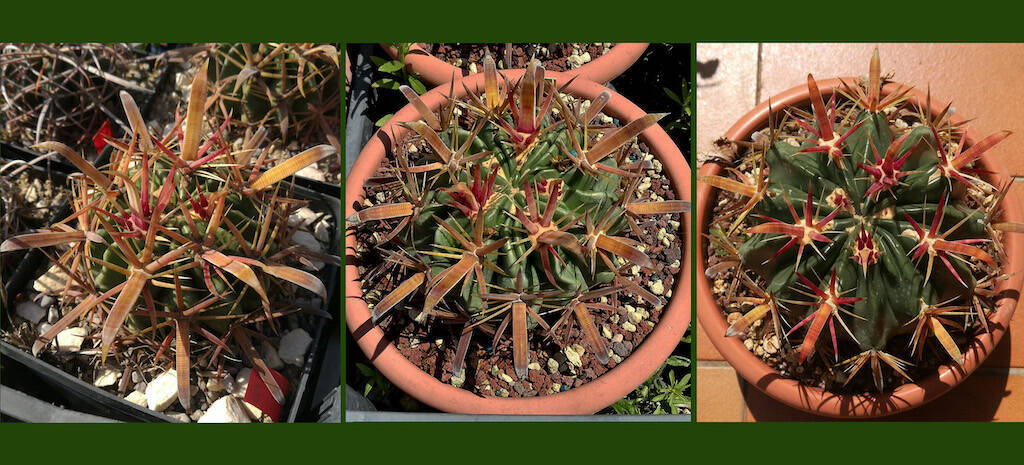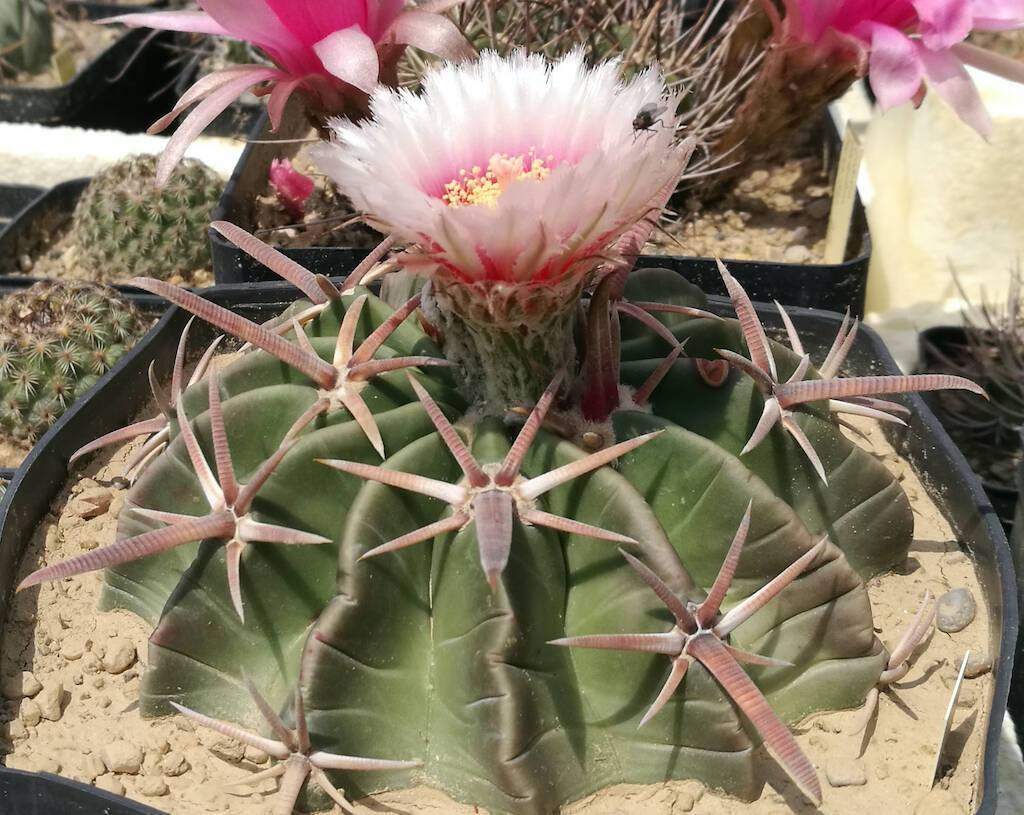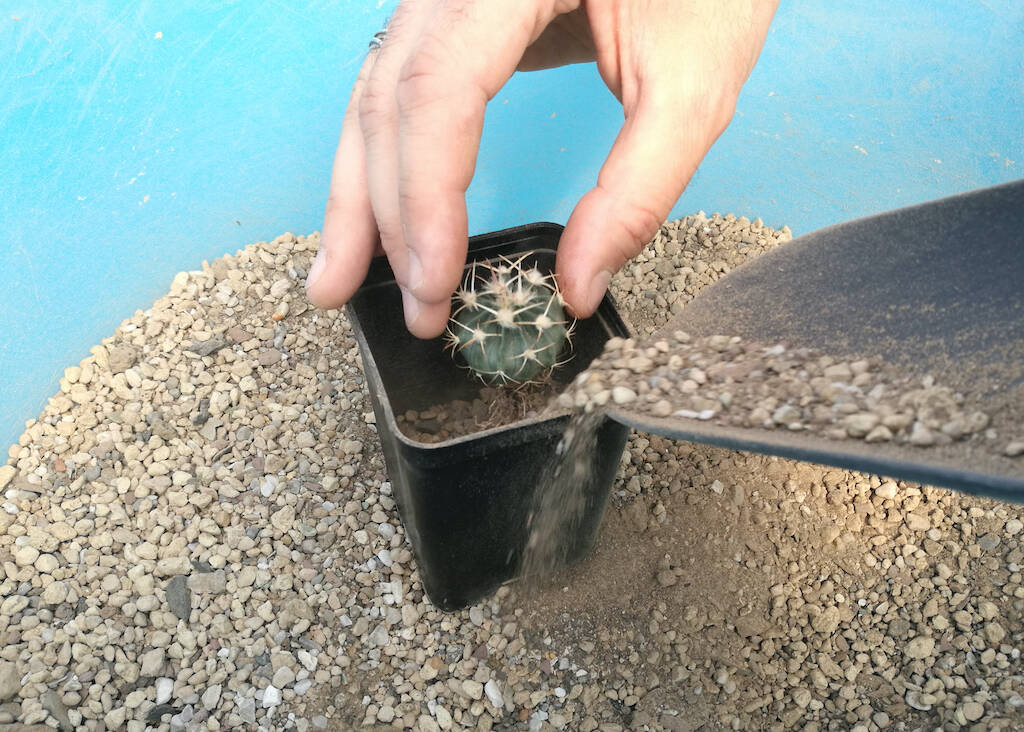An etiolated cactus is a plant with an unnatural habit and which has suffered from a more or less serious lack of light. The phenomenon is unfortunately irreversible but it is possible to prevent etiolation and stop it.
Who hasn’t happened at least once to observe in some office, apartment or even non-specialized nurseries (or garden) those cone-shaped cacti with thin spines and pale green stem? Cacti with a rounded base and an elongated apex, tapered to the point of giving the plant an almost pyramidal shape. The novice grower may think that is the normal bearing of the plant, but the grower with some experience – or even just a critical mind – usually is horrified at such plants. If anything, he or she may be saddened, because he or she knows full well that that is not the normal bearing of the cacti at all, but simply the outcome of what is technically called “etiolation” or, commonly, “spinning.” By the way, the photos above and those accompanying this article are of plants in a nursery and not mine, I want to make that clear right away!
Why does this fate happen to some cacti? How to avoid cactus etiolation and how to distinguish it from normal growth or from growth that is simply dissimilar to normal? Is it possible to remedy the damage caused by spinning on a cactus? We answer these questions in the following article. (…)


